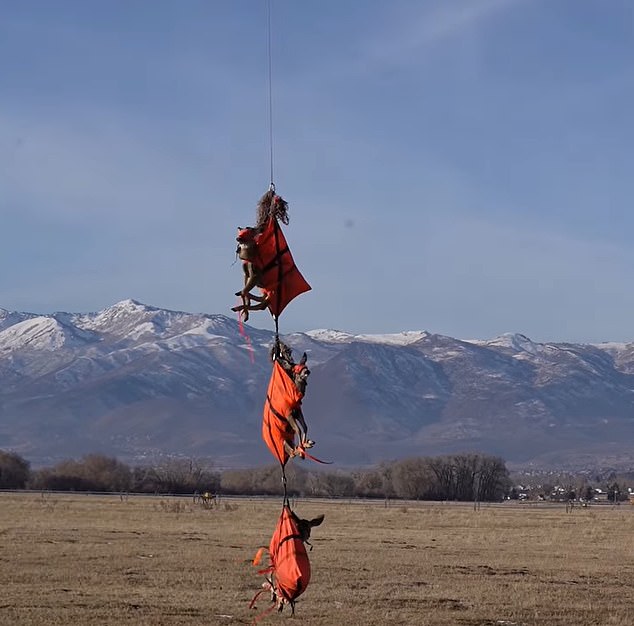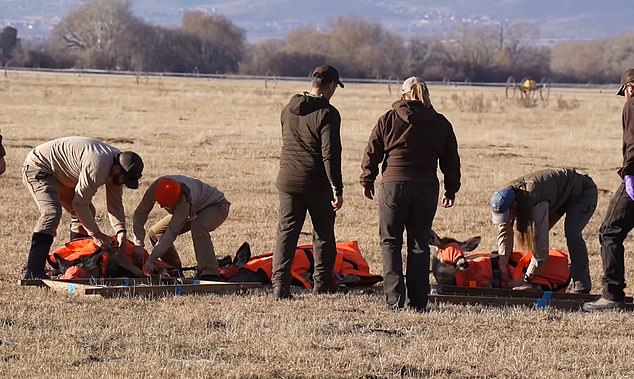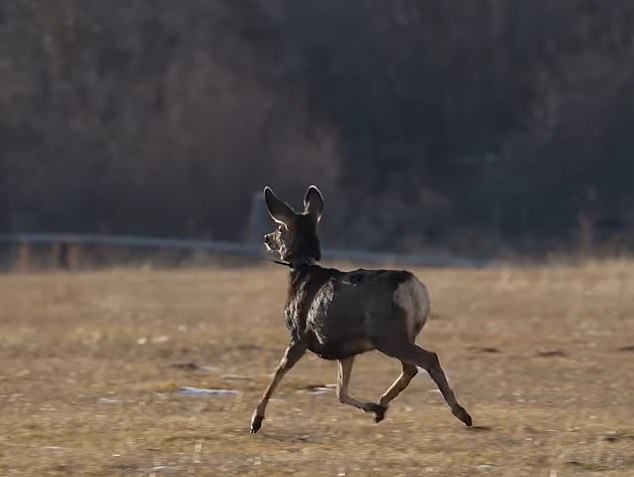Is that Dasher and Dancer? Flying deer in red coats are spotted over Utah
Flying deer were spotted over Utah a few days before Christmas, but the airborne animals weren't pulling Santa's sleigh.
The animals were wrapped in red cloth and suspended from a rope attached to a helicopter that was transporting them to an area for health assessments.
Biologists undertake the mission each winter, moving 1,200 deer to an open area where the four-legged animals can be tagged with GPS collars.
The team jumped into action as soon as the deer landed on the ground, removing the clothing and returning it to the wild.
The animals were wrapped in red cloth and suspended from a rope attached to a helicopter that was transporting them to an area for health assessments.
The mission was carried out by the Utah Division of Wildlife Resources, which shared the video on its site Facebook page.
“This is not Santa's flying reindeer!” Each winter, our biologists capture and place GPS collars on approximately 1,200 deer across the state.
“They are also brought to a staging area where we carry out health assessments before allowing them to safely return to the wild.
“These important efforts help us monitor and identify deer migration patterns.”
Biologists measure the fat content of deer and place a vaginal implant in some of the deer, and when they give birth, a tracking device will lead experts to the fawn.

The animals were wrapped in red cloth and suspended from a rope attached to a helicopter that was transporting them to an area for health assessments.

The team jumped into action as soon as the deer landed on the ground, removing the clothing and returning it to the wild

“Putting GPS collars on deer and following the animals over time provides biologists with valuable information, including how long deer live in Utah, their type of habitat during different times of the year, and their migration patterns.
“Putting GPS collars on deer and following the animals over time provides biologists with valuable information, including how long deer live in Utah, their type of habitat during different times of the year, and their migration patterns,” the organization shared.
Trackers also help researchers detect poaching.
The Utah Division of Wildlife Resources reported that 179 animals were killed illegally in the state last year, out of a total of 1,283 illegally captured wildlife and fish — an 11 percent increase from 2021.
The deer are captured by a team using net rifles and then placed in red bags – the animal's eyes are also covered.
Captures typically occur in November and December (with a few occurring in February and March) when animals migrate to lower elevations and are easier to locate.
Another reason hunts occur during the winter is that larger animals have difficulty regulating their body temperature, and cold weather helps them recover more quickly.
(Tags for translation)dailymail
